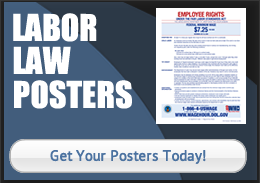Complete Story
05/16/2015
Tires & Compliance, Safety and Accountability (CSA) program: An update
Source: Fleet Equipment Staff
Tires play a major role when it comes to Federal Motor Carrier Safety Administration’s (FMCSA) Compliance, Safety and Accountability (CSA) program. The two fleet Safety Management System (SMS) for CSA categories are 1) vehicle maintenance and 2) hazardous material compliance. Tires fall under the vehicle maintenance category.
Violations associated with tires receive either a three or eight point penalty. Since tires fall under the vehicle maintenance category, there is an additional point penalty assessed on anything in this maintenance category. So what is considered an eight point penalty?
- Flat tire;
- Fabric exposed;
- Belt material exposed;
- Tread or sidewall separation;
- Audible air leak;
- Cut exposing ply and/or belt material;
- Tread depth less than 4/32 in. for steer tires; and
- Tread depth less than 2/32 in. for drive, trailer, and dolly tires.
The three point tire penalties include:
- Tire exceeding weight rating listed on tire sidewall;
- Weight carried exceeds tire load limit; and
- Tire underinflated.
When a vehicle is inspected either at a weigh station or pulled over by the highway patrol and the officer finds an eight point tire violation, that vehicle is considered out of service. A good example is a flat tire. By definition of the Commercial Vehicle Safety Alliance (CVSA), a flat tire is a tire that has a pressure less than 50% of the maximum pressure molded onto the tire sidewall. For a low profile 295/75R22.5 LR G, the maximum load when run as a dual configuration is 5675 lbs. at 120 PSI. Therefore, if the measured tire pressure is 60 PSI or lower, the tire is considered flat and the vehicle is put out of service. You are not allowed to even drive to the next truck stop to get the tire repaired and aired back up. An expensive roadside service call would be required to get the tire repaired. An average roadside service call is over two hours that can lead to additional time penalties associated with just-in-time delivery loads.
The most common CSA violation when it comes to tires are those that are measured to have less than the legal tread depth limit of either 4/32 or 2/32 in. This has always surprised me since it is so easy to identify tires with low tread depth. A quick visual inspection during the morning mandatory vehicle walk-around should be able to pick out these low tread depth tires. The use of a simple tread depth gauge will determine if the tires that may appear to have low tread depth really are below the target 4/32 or 2/32 in. number.
Flat tires are the second most common tire related CSA violation. Today’s radial truck tire construction makes it difficult to look at a tire and determine if it has the correct amount of air pressure. Using a baseball bat or club may identify a tire with 0 PSI; however, a tire pressure gauge is highly recommended to determine the actual tire air pressure. Even if the tire pressures were checked while the vehicle was parked at the yard, running over a nail 20 ft. outside the gate can lead to a low tire pressure. This is why automatic tire inflation systems are so popular on trailers. Air is automatically added as the vehicle is running down the highway whenever the pressure drops below the system’s control box setting.
Until just recently, tire underinflation violations were also an issue fleets had to contend with. There was no definition of “underinflation” in any of the literature. In CVSA’s April 1, 2015, edition of the North American Standard Out-of-Service Criteria Handbook, a new regulatory update was posted. In order to have a violation for low tire inflation pressure, inspector must have a load/inflation chart for the given tire size and load range. These load/inflation tables list the minimum tire pressure for a complete range of loads.
Under the old guidelines, a tire may have a max pressure molded onto the tire sidewall of 120 PSI and the fleet could be running, for example, 85 PSI in their trailer tires. An inspector could have given a three point underinflation penalty. With no clear definition of underinflation, he could have made the decision 85 PSI was too low. With the new regulatory update, If the loads were relatively light, 85 PSI would be more than acceptable to carry the load based on these load/inflation tables. You can review these load/inflation tables for all tire sizes at any of the tire manufacturer’s website.






